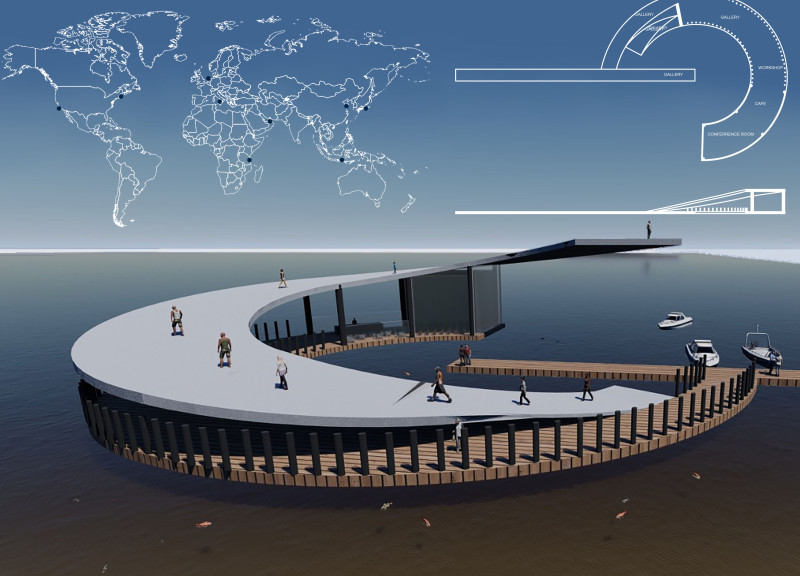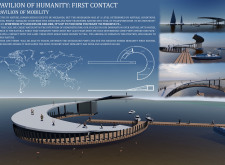5 key facts about this project
The Pavilion of Humanity: First Contact explores the important relationship between humans and nature, focusing particularly on movement and migration. Located in a landscape designed for interaction with natural elements, the pavilion acts as both a place for exhibitions and a connection to the environment. The design centers around the idea of water, highlighting its essential role in human life while also revealing the complexities involved in humanity's relationship with nature.
Integration with Water
Water plays a crucial role in the design, representing both life and challenge. It highlights the historical connection between people and this vital resource. The pavilion is organized around specific points that connect it to the land, illustrating how natural and built environments come together. These points have been strategically chosen to reflect the importance of various areas where human activities intersect with nature.
Connectivity and Exploration
The design encourages movement and exploration through its layout. Visitors can navigate defined pathways, enabling them to connect with significant historical locations. This arrangement fosters a lively environment, allowing for an interaction among different forms of life, which enhances the overall experience of the space.
Introspection and Environmental Stewardship
The pavilion invites visitors to reflect on human achievements and the responsibilities that accompany them. By focusing on the interaction with water and the landscape, the design inspires a sense of care towards the environment. It prompts people to consider their role in maintaining balance between human development and the natural world.
Transitional Design Elements
A notable detail is how the architectural surfaces blend with the surrounding landscape, creating a natural flow between the built environment and its setting. This approach improves the visual appeal and reinforces the theme of connectivity, illustrating the idea of human migration and their ongoing relationship with nature.



















































